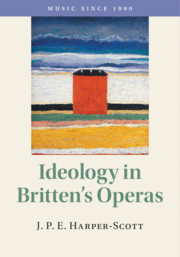2 - Ideological Narratives
from PART I - MAPPA MUNDI
Published online by Cambridge University Press: 04 September 2018
Summary
For an ideologeme, a self-replicating unit of ideology, to have any purchase on an individual human consciousness, it must be repeated, and reproduced as accurately as possible in each generation, so that it becomes part of the cultural fabric of individuals and their society. To the casual eye, it might seem that as critics of ideology we should therefore fix our attention on a bipartite relation between ideology on the one hand and human beings on the other. But this simplistic model conceals a more complex tripartite relation, and it is this more tangled structure that is the proper focus of an ideological criticism of artworks. To say that an ideology operates on human individuals is to say that a message or law is transfigured, via some form of discourse (an abstract idea or a narrative), into the human beings who inhabit the legal, administrative, cultural, religious, and economic spaces that ideologemes have always already moulded into existential containers for our habitation. There is thus an approximate parallel between the expression of a gene in a life form and the ideological formation of a human subject which, while it is in no sense intended as a strict and literal homologue, may nevertheless be taken as a useful analogue in the chapters that follow, as a means of grasping how the ideologeme and the human coalesce.
In the expression of a gene, (i) DNA is (2) transcribed into (3) RNA, which is (4) translated into (5) protein or some other gene product (which, ultimately, will sustain life). Three stopping points (DNA, RNA, protein) are traversed by two moves (transcription, translation), in order that information, the starting point of the process, becomes biology: the genotype becomes the phenotype, or more abstractly, the conceptual becomes material. In ideology, (1) a message or law is (2) symbolized as (3) some form of discourse, and (4) a process of interpellation results in (5) an ideologically mandated subject.
- Type
- Chapter
- Information
- Ideology in Britten's Operas , pp. 23 - 66Publisher: Cambridge University PressPrint publication year: 2018



